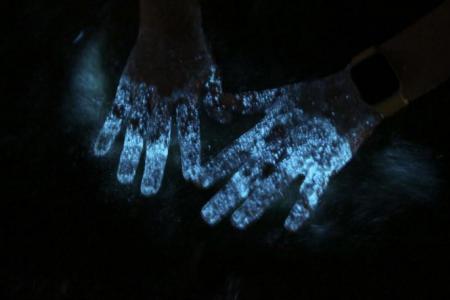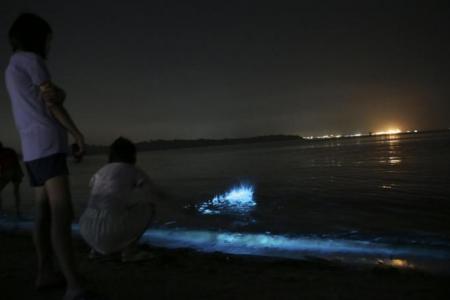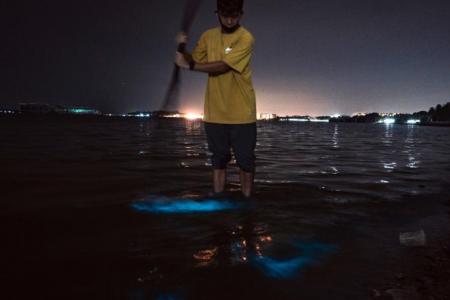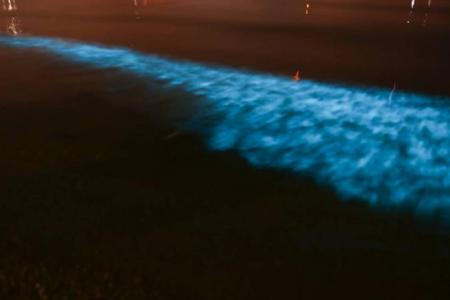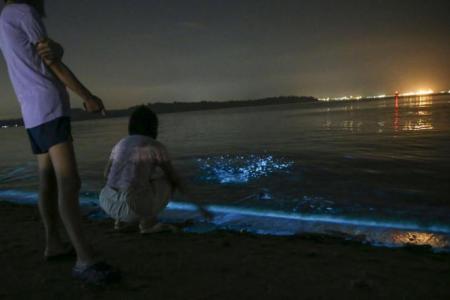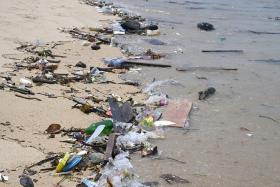Blue glow in waters off eastern S'pore shoreline will last for 2 to 4 more days: Marine biologist
The blue glow that has been observed in waves at beaches in eastern Singapore over the past few nights would likely last for the next two to four days, said a marine microbiologist.
The bright blue waves are caused by a bloom of marine microorganisms called dinoflagellates, whose bioluminescence is activated when the waters are disturbed.
Assistant Professor Rebecca Case from the School of Biological Sciences in Nanyang Technological University (NTU) told The Straits Times on Thursday (March 24) evening: "I am fairly confident to say that this has got two to four more days to it."
The phenomenon has been occurring in waters off Singapore's eastern coastline.
However, because the bloom depends on environmental factors such as temperature and water salinity, it is hard to predict if the current bloom will persist beyond the next four days.
Prof Case, who is principal investigator at NTU's Singapore Centre for Environmental Life Sciences Engineering and specialises in algal-bacteria interactions, said: "After the peak of the bloom, it usually takes around two to four days for it to completely dissipate.
"These blooms can last for one to two weeks."
She added: "If people want to see the blue waves, they should go this weekend."
In response to a query by The Straits Times, the National Parks Board said that the scale of bioluminescence observed recently could reflect undesirable changes in water quality, such as elevated nutrient levels.
However, it added that these blooms of bioluminescent microorganisms are not known to be harmful or toxic and thus are unlikely to negatively impact marine biodiversity or human health.
The phenomenon came to ST's attention when it was documented at Pasir Ris Park by Mr Eric Teo in a Facebook post on Tuesday.
When ST visited Changi Beach Park on Thursday night from 8 to 11pm, the blue light in the waves got progressively stronger later in the night, peaking at around 11pm.
Although the bioluminescence is activated when waters are disturbed, Prof Case said that prolonged disturbance by boats can cause the dinoflagellates to run out of energy and go dim.
She added: "The presence of background light also makes the light less easy to see."
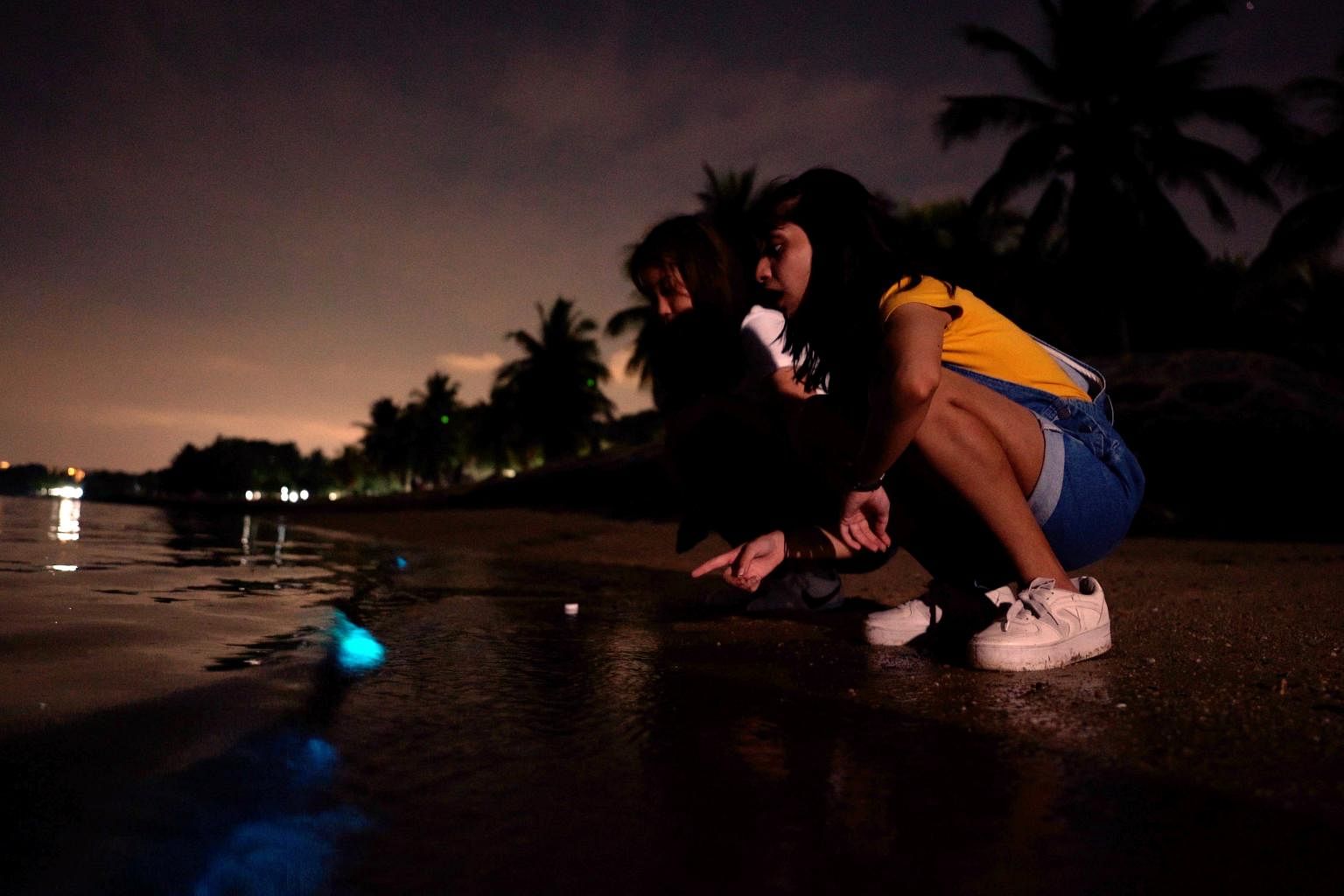
Many Singaporeans were at Changi Beach Park on Thursday night to see the blue waves.
ST spotted at least a hundred people along the shoreline, splashing in the ocean and creating neon footprints in the sand.
One of them was Mr Kenny Chen, 32, an engineer, who was there with some of his friends. He said: "When my friends and I saw media reports on the blue waves in the middle of the week, we decided to come down because it looked interesting.
"I am surprised by how bright the lights are and they look very nice."
Some of them, like university undergraduate Ian Koh, were swimming in the sea.
Mr Koh, 20, who was there with two of his friends, said: "For the past hour or so we were trying to create many nice effects, such as by lobbing stones into the water and splashing as much of the water surface as possible."
Mr Koh, who was at the beach from 8.30 to about 10pm, said that the glow in the water got much brighter at 9.30pm, after the ferry service from the nearby Changi Ferry Terminal to Pulau Ubin stopped running.
He added that he would be going back over the next two to four days to play in the sea again.
He said: "We don't know when this will come back again given that this is a natural phenomenon, so it's definitely worth coming back to check it out."
Get The New Paper on your phone with the free TNP app. Download from the Apple App Store or Google Play Store now

